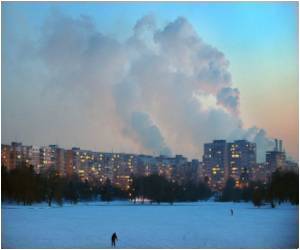The race to reach the South Pole ended in tragedy for Robert Scott and victory for Roald Amundsen.

"Our new record shows the dramatic impact of industrial activities such as smelting, mining, and fossil fuel burning on even the most remote parts of the world," said McConnell, the study's lead author, research professor and director of DRI's ultra-trace ice core analytical laboratory, located on the institute's campus in Reno, Nev.
"It is very clear that industrial lead contamination was pervasive throughout Antarctica by the late 19th century, more than two decades before the first explorers made it to the South Pole," he added. "The idea that Amundsen and Scott were traveling over snow that clearly was contaminated by lead from smelting and mining in Australia, and that lead pollution at that time was nearly as high as any time ever since, is surprising to say the least."
All measurements of lead and other chemicals used in this study were made using DRI's unique continuous ice core analytical system. Low background atmospheric concentrations, together with well-known and often distinct isotopic characteristics of industrial sources make lead an ideal tracer of industrial pollution.
Source-Eurekalert









